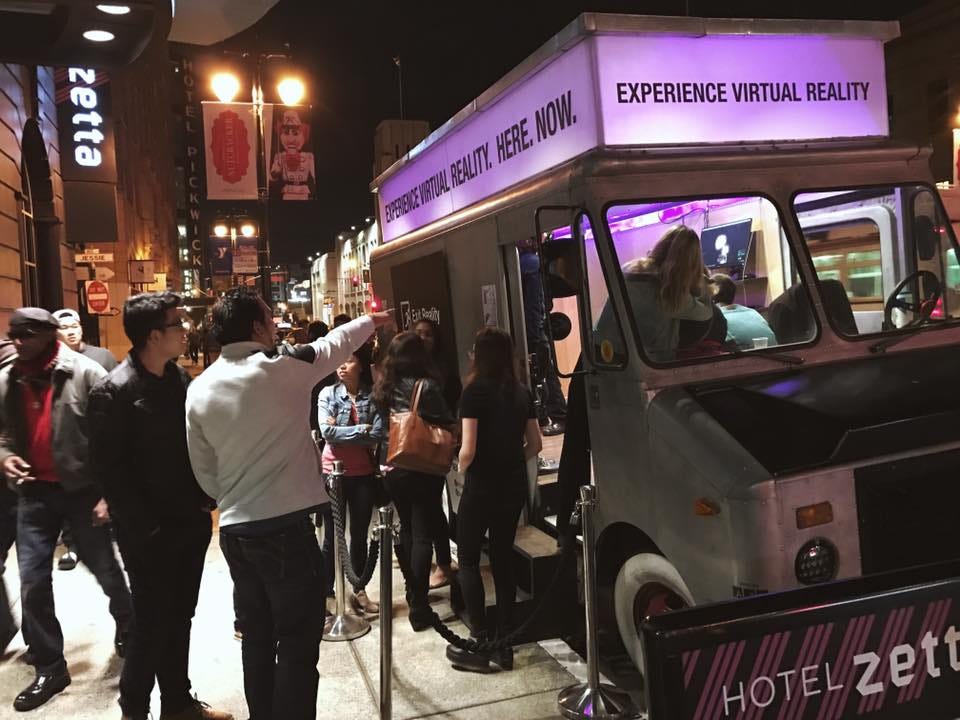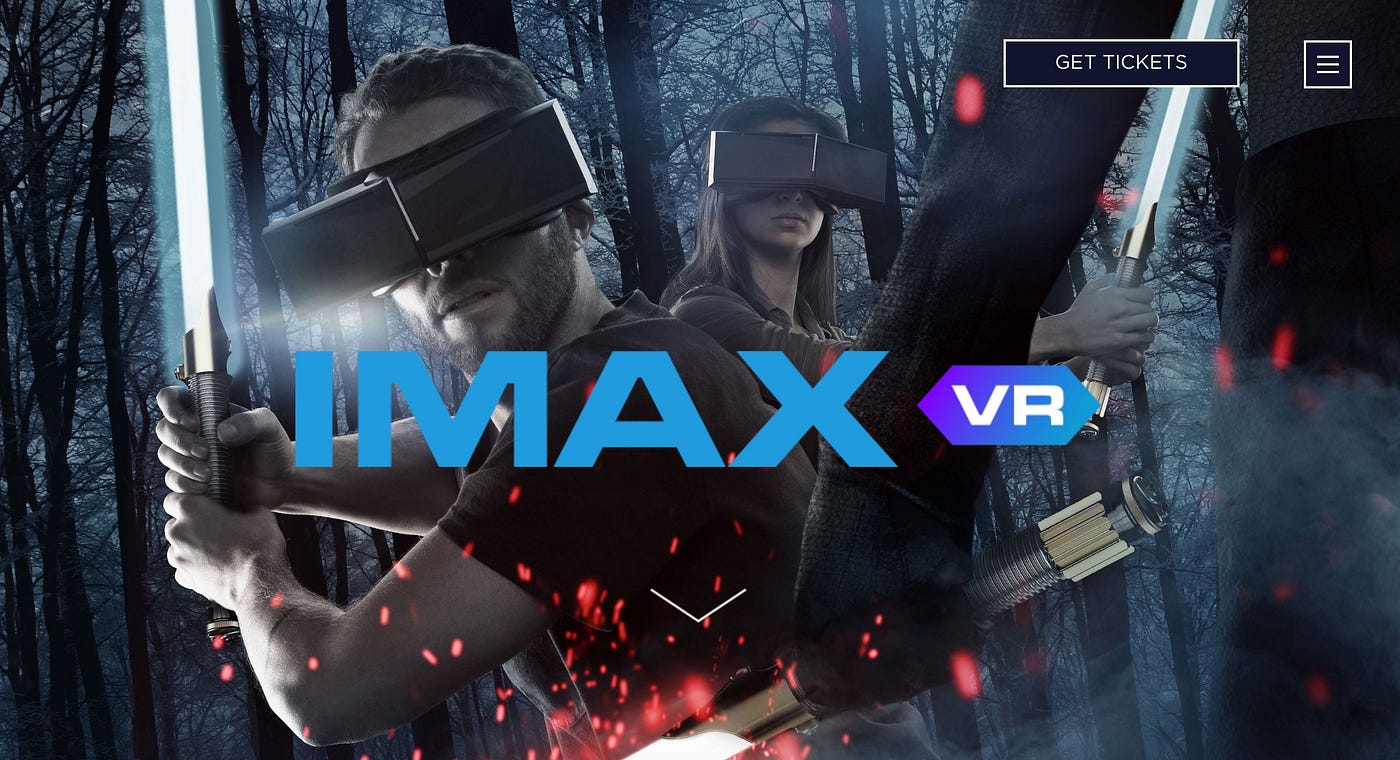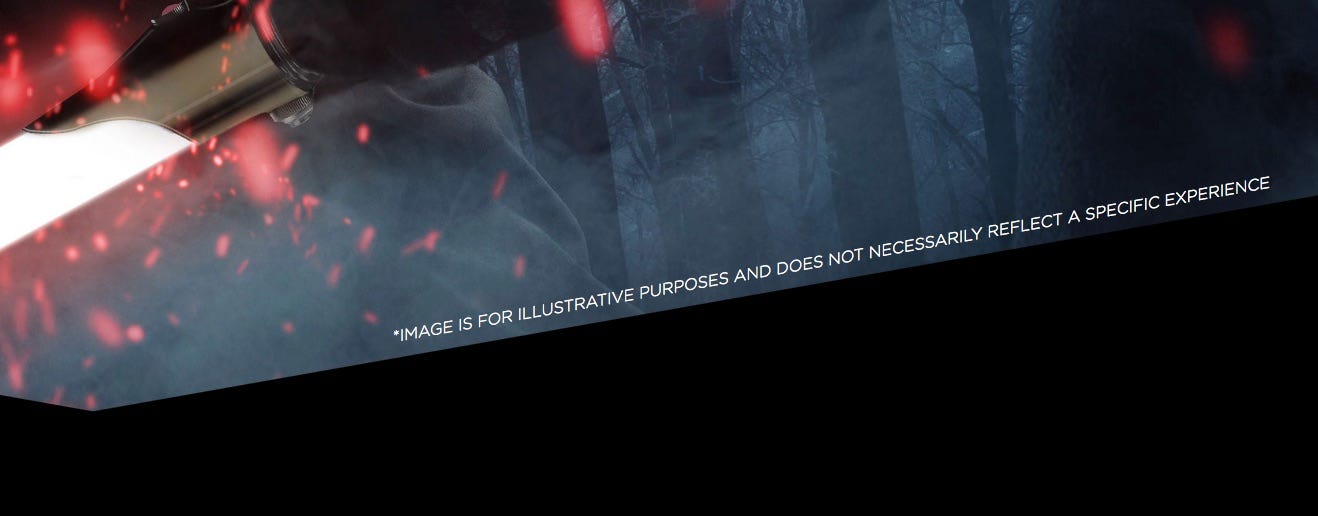
For nearly all of 2016 we all talked about it: the moment when VR arcades were going to start popping up.
There were demos at conventions and stories on sites like this one. Of course, there was The Void — which crafted a singular experience in New York City, but hasn’t generated much buzz outside of the tech world. (Being tied to Ghostbusters might have something to do with that.)
The missing piece of the VR puzzle still remains the channel to give folks who haven’t seen it yet a way to try high end VR. One that doesn’t require them to lay out a lot of money or know someone with a headset. The good news is that I saw two things in Los Angeles recently that are have a shot at changing that.
First comes one that you might have heard of, but doesn’t have a big brand name attached to it. That would be Exit Reality, a company out of the San Francisco Bay Area that brought their signature VR van — think of a food truck, but for VR — down to LA for a stint. Exit Reality also put together a deal with the Viceroy hotel in Santa Monica — part of a global luxury hotel chain — to set up one of their demo cubes in the hotel lounge.
The start-up is offering up a selection of experiences for consumers to just try out, for free. Everything from Tilt Brush to Space Pirate Trainer to the Gnomes and Goblins demo. The Venice-based WeVR’s content is well represented, with The Blu being used to initiate first timers of all ages into the wonders of room-scale VR. In other words: the same way a lot of folks in the VR world first experienced it. Again: all as a free demo, designed to drum up interest in VR as a category amongst people who have heard of it, but who haven’t yet tried it out.
Exit Reality’s co-founders, Yehonatan Koenig and Ilya Druzhnikov, and I sat down an talked for the better part of an hour about how the company came to be. The short version: Koenig, who has worked in games, animation, and advertising for decades wanted to get into the business of making VR content. Yet he recognized that there was no channel to get VR into the hands of consumers. Instead of running aground making content for a market that wasn’t there yet, he’s choosing to make the market first. A late-night call to his friend Druzhnikov led to Exit Reality’s strategy.
That strategy would be this: bring VR to where people are already gathering, adding value to the venue and opportunity to connect with consumers to content creators. The delivery method is the van — soon to be vans — and the cubes, which are also under production.
The cube itself is straightforward and attractive: a polished steel exterior with irregular sheet metal cuts and rivets that looks like something you might find if Aperture Science was a start-up. There’s black acoustical foam on the inside of the cube, and the cable tether is attached to an overhead pulley. The acoustical foam does a surprisingly good job of dampening the ambient noise considering that the set up is more of a cubical — open on one side and sans roof — than a sealed in cube.
Playing inside the cube was comfortable, if a bit smaller than you might want for room-scale. The nice this was that any contact with the walls was made pleasant thanks to the foam.
As a set-up for first timers, I can’t think of anything better. Not at the price of free, at any rate.
My conversation with Koenig revealed a guy who gets this whole immersive thing. Not only does he have a background in games and experience design, Koenig has ties to the SF Bay Area’s theatre community. That includes the immersive theatre show The Speakeasy which has been getting good notices since its return engagement began this past Fall. It’s important that the people who bring VR to the masses understand that what makes the technology so special is the experience of the technology. Those of us who are connoisseurs of the gear may get excited about resolution and field of view, but those are just the fundamentals: the magic of VR is in the framing.
Which brings me to my second encounter.

Driving home from work a couple of weeks back I passed by a building on Fairfax in the center of LA that had been branded with the IMAX VR logo. I wasn’t sure if it was IMAX’s offices for their VR operations or something more consumer-facing. I bet on the later, as it was in the exact same location — across the street from LA’s landmark Farmer’s Market — as the Samsung Gear demo house was a year before.
I stopped in the next day to find out this was the flagship location in IMAX’s planned VR project. While the press preview is set for Valentine’s Day that didn’t stop me from becoming a paying customer right on the spot. I paid $10 to play the John Wick promo experience on a Starbreeze headset for about 12–15 minutes.

It was only my second time in a Starbreeze, and this model seemed a hell of a lot lighter than the helmet I wore during the Nokia OZO launch event. It felt no heavier than the current Oculus gear. The resolution left something to be desired in terms of the draw distance, but that might have also been the game.
That’s not the important thing, not this time. You want to know about the venue.
The lobby of the IMAX is set up like a cross between a movie theatre and a Starfleet doctor’s office. There are video poster walls displaying ads for the various experiences, a showtimes board showing what is available, a couple of ticket salespeople and two rows of cushioned benches arrayed behind a decorative wall and in front of two video monitors. Those monitors play the orientation video for the newbs. I probably should have watched it, but I was in a rush.
Past the monitors was a door that led into the back, where the “pods” were kept. I was expecting sealed in rooms with that name, but what they were is bigger cubicles. About the size of a small apartment’s living room. In other words: just big enough for room-scale. There were a lot back there, with a few different sizes and amount of walls/baffling. Although no acoustical foam that I could see.
It was less industrial and more approachable looking, all couched in the transactional metaphors of the movies. The attendant tore my ticket, and the showtime board was — from what I could tell — really just for show. There were a lot of options: from Trials on Tatooine to the aforementioned John Wick, a sampler pack and a bunch of others. The implication being that there will be new content coming in all the time.
Of course, if you have a room-scale setup at home there’s no real point to going to the IMAX VR, but this isn’t for that market. This is for the people who don’t want to drop $1000-plus on a decent Vive rig.
The still-open question is whether ten minutes in VR heaven is worth $10. Having actually dropped the cash, I can’t say that it necessarily is. Not past the novelty point. Oh sure, I can see myself going back and dropping another $10 on something from Lucasfilm’s XLab or some other marquee content, but there’s something about not even getting a guaranteed quarter hour of fun that seems weird. And yes, I’m someone who spends $5 on coffee and buys Star Wars figures: but those are addictions.
Right now the best VR content in my view are things like Tilt Brush, Oculus’ Medium, and Mindshow: creative tools that you want to linger with, not get kicked out of after ten minutes. IMAX VR, or any of the other pay-to-play plans are going to need some killer apps to turn the curious into repeat customers.




















Discussion